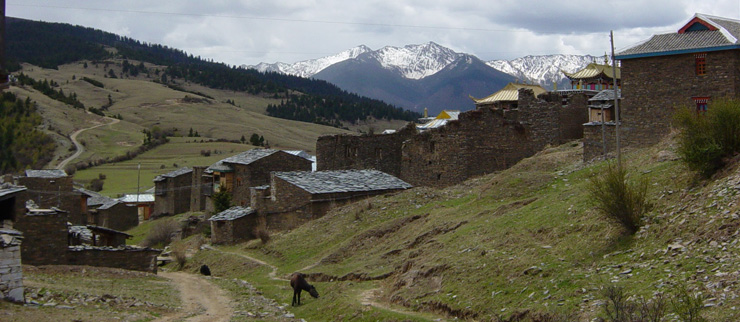Sichuan and abutting areas are home to a good number of little-explored Sino-Tibetan languages and dialects, including many Tibetan varieties, Ngwi (Yi) languages, and over a dozen little-studied languages tentatively classified under a putative 'Qiangic' branch. Many of the latter group contain certain interesting properties, including large segmental inventories, uncommon tonality systems, topography-based spatial deixis, prohibitive marking with dental-stop-onset prefixes, nominal classification via existential verbs, and grammatical structure governed by animacy hierarchy. To what extent do these features reflect deeply entrenched borrowings? To what extent do they constitute retentions?
These and other intriguing questions prompted researchers at the Institute of Linguistics at Academia Sinica to organize in 2008 a workshop dedicated specifically to Sino-Tibetan Languages of Sichuan*, aiming to foster international cooperation and stimulate cross-fertilization of research efforts. Scholars actively engaged in field research on these languages were able to share research ideas, results, and methodology about the languages of this region. This workshop constituted a significant step towards a better understanding of the linguistic history and typological diversity of the vast Sino-Tibetan family. A second edition of the workshop was hosted by the Center for Chinese Linguistics of Peking University in 2010, with an emphasis on "Principles and Practices of Reconstruction".
The third edition of this workshop will be held in Paris in 2013 under the auspices of CNRS (Centre National de la Recherche Scientifique). This edition's special focus is on "Sino-Tibetan Languages of Sichuan in their Areal Context": in addition to submissions about the languages of Sichuan proper, we encourage submissions about languages of areas that border on Sichuan, or on more distant languages that open comparative perspectives for Sino-Tibetan studies.
Thanks to support from our sponsors, registration is free of charge.
*The term 'Sino-Tibetan' has been substituted for 'Tibeto-Burman' as used in the previous two editions of the Workshop. This choice was made in light of the fact that the division of Sino-Tibetan into Sinitic on the one hand and Tibeto-Burman on the other is one among several competing hypotheses. This is a notoriously difficult language family for historical linguistics, and no certainty has been reached at present about primary branches of this family.

Photo by Lin You-Jing. Japhug Rgyalrong-speaking area, Sichuan, China.
